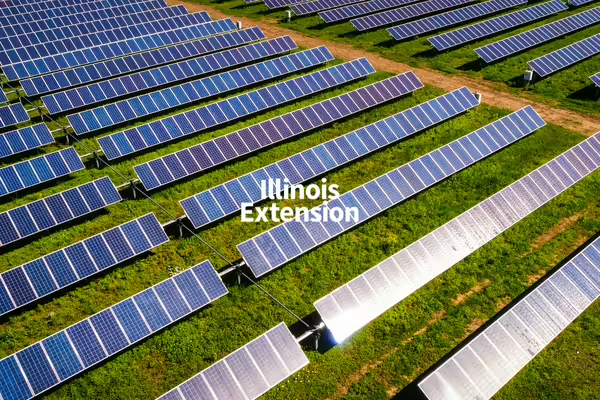
URBANA, Ill. – Renewable energy technologies such as wind turbines and solar panels are gaining traction, but are sometimes met with local resistance because they take up valuable space that could otherwise be used for agricultural production. Agrivoltaics provides a way of creating dual land usage, combining solar panels with crops or grazing animals in the same field. But this emerging technology faces regulatory headwind because the land will no longer be classified as agricultural.
A new study from the College of Agricultural, Consumer and Environmental Sciences (ACES) at the University of Illinois presents an overview of zoning and taxation regulations that affect agrivoltaics across the United States, identifying challenges and possible solutions.
“There are many benefits to co-locating solar panels and agriculture on the same plot of land. There is an increased need for renewable energy, while agricultural land continues to decrease. When you're able to find a technology where you can put these uses together, you may reduce the overall potential that either technology could have on its own, but you still get a better total outcome. It can also be a very good financial diversification for the farmer,” says Tyler Swanson, one of the study’s authors. Swanson is an undergraduate student in the Department of Agricultural and Consumer Economics (ACE) at U of I. He serves as a research assistant in the Bock Agricultural Law and Policy Program under the guidance of ACE professor and program director Bryan Endres.
The study focuses on regulations concerning solar panels and grazing because it is a more established practice. It can be difficult to find crops that thrive under solar panels, but for grazing animals, particularly sheep, the combination works out well. The sheep graze around the solar panels, providing needed vegetation maintenance.
Read more from the College of ACES